UK air defense system. (part of 3)
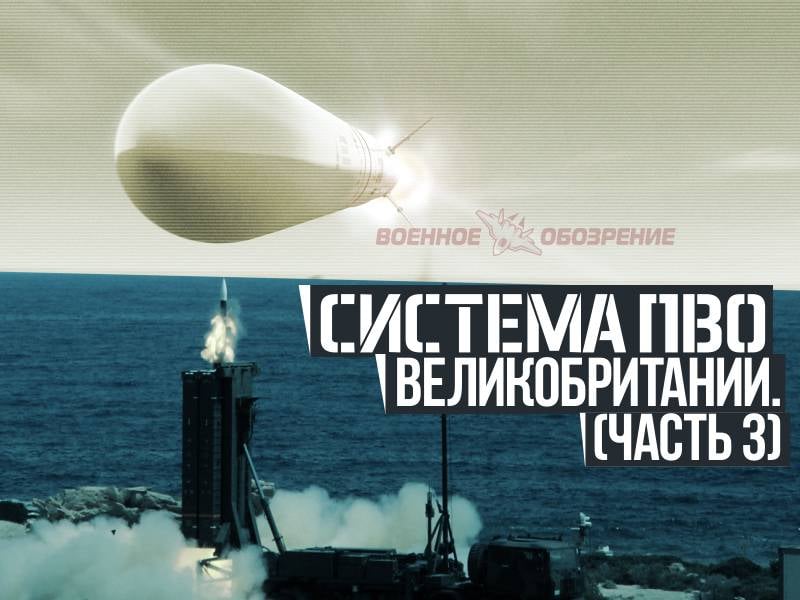
Until the middle of 50, the ground defense of the British Ground Forces was formed by anti-aircraft systems adopted on the eve or during World War II: Browning M12,7, 2-mm Polsten and 20-mm Bofors L40, and 60 machine guns mm anti-aircraft guns 94-Inch QF AA. For their time, these were quite effective means of dealing with an air enemy, but as the speed and altitude of jet warplanes increased, they could no longer protect ground units from air strikes.
If large-caliber machine guns and 20-40-mm anti-aircraft guns can now pose a threat to combat helicopters, fighter-bomber and attack aircraft operating at low altitudes, even when using projectiles with a radio fuse by the end of the 50-x, in many respects the share . Large-caliber 113 and 133-mm anti-aircraft guns were preserved only in the vicinity of naval bases and on the coast. These guns, administered by the Navy, were used mainly in coastal defenses. Through 15 years after the end of the war, shooting at aerial targets became a secondary task for them.
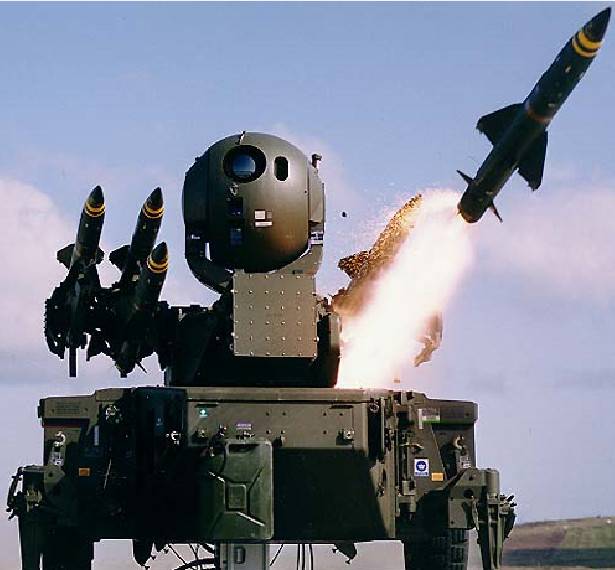
In 1957, the British Army finally parted with the 94-mm anti-aircraft guns, re-equipping the 36th and 37th heavy anti-aircraft regiments with guns on the medium-range air defense systems Thunderbird Mk. I. But as already mentioned in the second part of the review, heavy low-maneuverable systems that used carriages of the same 94-mm guns as towed rocket launchers turned out to be "out of court" in the army anti-aircraft units. The service of heavy and long-range Petrels, despite good performance and modernization, was short-lived. The army said goodbye to them in 1977. The main reason for the rejection of generally good air defense systems was the poor mobility of the complexes. But it is worth recalling that just in the mid-70s in the United Kingdom, as part of the economy of military spending, a number of programs for creating aviation and rocketry, and also abandoned full-fledged aircraft carriers. Most likely, the Thunderbird solid-fuel anti-aircraft systems became a victim of economic turmoil. At the same time, the Royal Air Force managed to maintain and even modernize the Bloodhound air defense system, which used much more complex and expensive missiles with ramjet engines.
Soon after the Royal Navy put into service a Maritime Zone near-sea Sea Cat (Sea Cat), the army command became interested in it, planning to replace the 20 and 40-mm anti-aircraft guns with short-range guided missiles. Since this complex with visual radio command guidance was very simple and compact, it was not a particular problem to adapt it for use on land.
The developer and manufacturer of both sea and land options was the British company Shorts Brothers. To adapt the complex, which received the name Tigercat (marsupial marten, or tiger cat), in accordance with the requirements of land units and the creation of transporters, Harland was recruited.
Operation of the first anti-aircraft complex of the near zone in the British Army began in 1967. SAM "Taygket" was used for air defense of British air bases in Germany, as well as to cover large garrisons and headquarters. Compared with the first versions of the “Sea Cat”, in the land modification the proportion of semiconductor element base was larger, which had a positive effect on the time of transfer to the combat position, reliability, weight and dimensions.
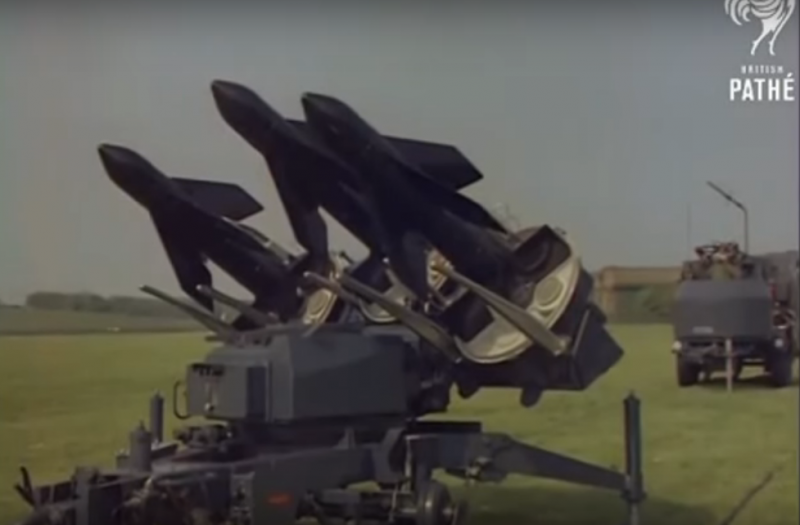
The combat means of the “Taygerket” air defense system consisted of a guidance post and a launcher with three anti-aircraft missiles placed on two towed trailers. Calculation - 5 people. A guidance post and a mobile PU with three missiles could be towed by off-road Land Rover vehicles at speeds up to 40 km / h. At the firing position, the towed PU was hung out on jacks and connected by a cable line to the control station.
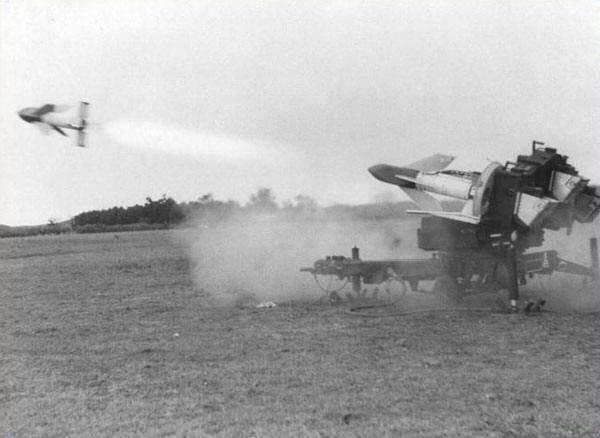
A solid-fuel anti-aircraft missile, controlled by radio, was aimed at the target with the help of a joystick, approximately the same as the first ATGM. The launch range of missiles 68 kg was within 5,5 km. For visual support in the tail of the rocket there was a tracer.
The positive quality of the Taygerkat solid-propellant SAM was its low cost, comparable to the SS-12 anti-tank missile, which, however, is not surprising: during the creation of the Sea Cat air defense system, technical solutions were used implemented in the Australian Malkara ATGM. At the same time, the subsonic flight speed of the SAM, combined with manual guidance, could not guarantee an acceptable probability of hitting modern combat aircraft. Thus, during the British-Argentine conflict in the South Atlantic, the Sea Cat ship-based SAM system managed to shoot down only one Argentine Ai-4 Skyhawk attack aircraft, while more than 80 missiles were spent. However, numerous shipboard anti-aircraft complexes played a role in this conflict. Often, the Argentine combat aircraft stopped the attack, noticing the launch of the missile defense system, that is, slow, man-in-the-counter anti-aircraft missiles more acted as a "scarecrow" than a real air defense weapon.
Despite the low start-up rates and the likelihood of defeat, the British ground defense units that operated Taygket managed to gain positive experience and develop tactics for using short-range anti-aircraft systems. At the same time, the British military wanted to have a truly effective air defense system, and not just a “scarecrow”. The imperfection of the first British anti-aircraft complex near zone did not allow to completely abandon the Bofors 40-mm anti-aircraft guns, as planned. In the British army at the end of the 70-x SAMs Tigercat was replaced by a much more sophisticated complex Rapier.
The design of the low-range air defense system "Rapier" was carried out by Matra BAE Dynamics from the middle of 50-x without regard to the existing structures and taking into account the most advanced achievements in the field of materials science and electronics. Even at the design stage it was envisaged that the new anti-aircraft missile could effectively fight at low altitudes with the most modern combat aircraft. And the hardware of the complex was to provide high automation of the process of combat work. Therefore, the new air defense system turned out to be much more expensive than the “Tigerket”, but the combat characteristics of the “Rapier” have increased significantly. The advanced at the time of creation the technical solutions incorporated in the “Rapier” provided the complex with a large modernization potential and, as a result, a long life.
In 1972, the Rapier air defense missile system entered service with the British Army air defense units, and in 1974, several batteries were purchased to protect advanced airfields from Royal Air Force.
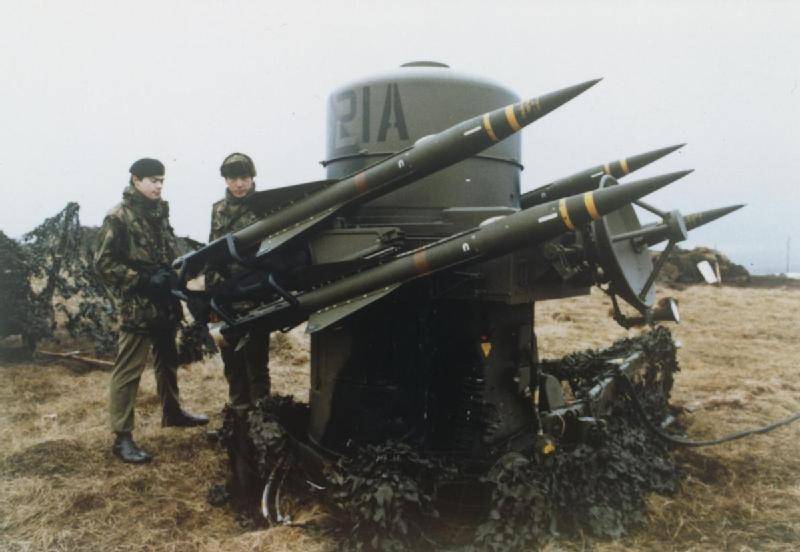
Conceptually, the Rapier air defense system resembled the Tigerket, the missile of the new complex was also aimed at the target using radio commands, and the complex’s elements were towed by Land Rover off-road vehicles and the air defense missile system also consisted of five people. But in contrast to the “Taygket”, the guidance of the “Rapier” SAM was automated, and the speed of the rocket’s flight allowed it to hit targets flying in supersonic sound. In addition, the complex included a surveillance radar, combined with a launcher, capable of detecting low-altitude targets at a distance of more than 15 km. An anti-aircraft missile complex weighing a little more than 45 kg on a trajectory has a speed of about 800 m / s and is capable of hitting targets with a high probability at a distance of 500-6400 meters, at an altitude of up to 3000 meters.
In the course of the combat work, the air defense system operator keeps the air target in the field of view of the optical device. In this case, the computer solver automatically generates guidance commands, and the infrared direction finder accompanies the missile defense system along the tracer. The control station with electro-optical instruments of support and radio command guidance equipment is joined by cable lines to the control panel and taken out to a distance of 45 meters from the starting one.
In 80-90-ies, the complex was repeatedly upgraded. In order to increase noise immunity and the ability to act at any time of day, the radar tracking of the DN 181 Blindfire and an optical television system operating in low light conditions were introduced into the air defense system.
At the end of the last century, a deeply modernized complex "Rapier-2000" began to be supplied to the armament of the army anti-aircraft units. The use of new, more effective Rapier Mk.2 SAMs, with an increased start-up range to 8000 m, non-contact infrared fuses and new optoelectronic guidance stations and tracking radar, significantly increased the capabilities of the complex. In addition, the number of combat-ready missiles on the launcher has doubled - from four to eight units. Combat operation SAM "Rapier-2000" is almost completely automated. Even at the design stage for more noise immunity and secrecy, the developers abandoned the use of radio channels for the exchange of information between the individual elements of the complex. All elements of the complex are interconnected by fiber optic cables.
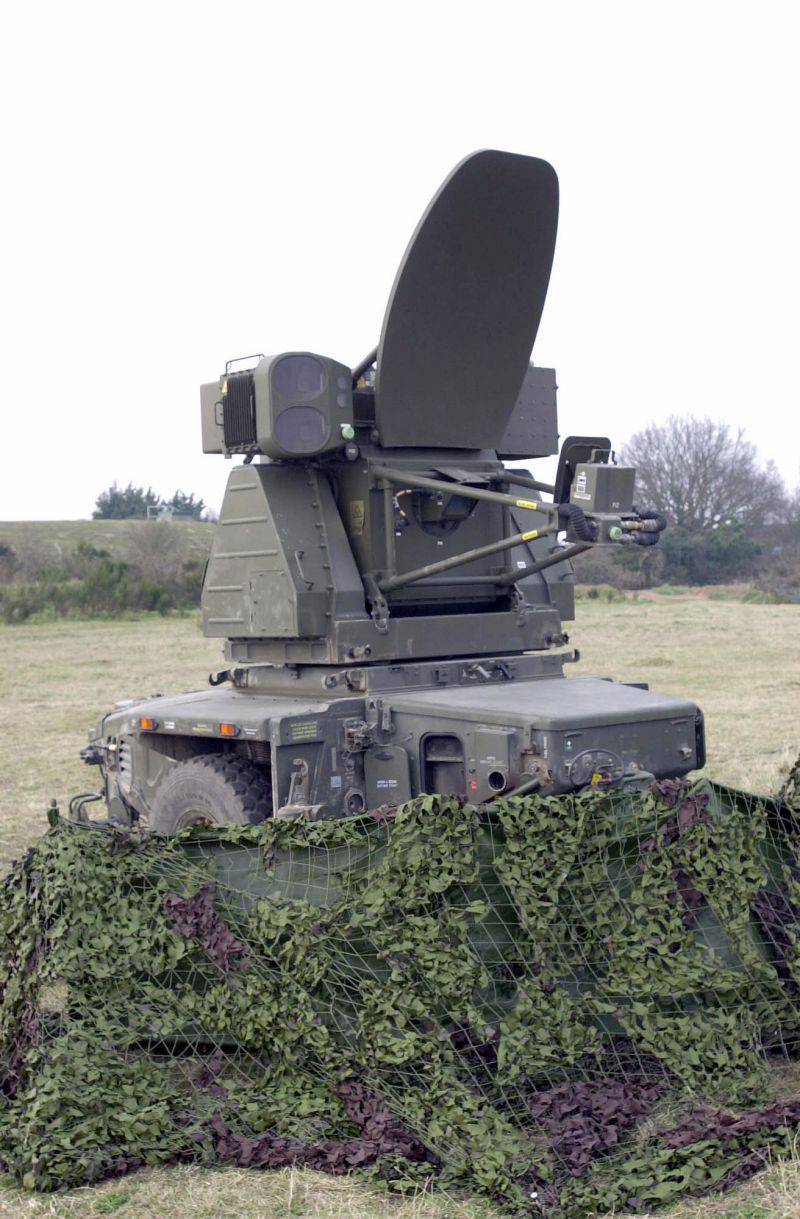
The new Dagger radar is capable of simultaneously fixing and tracking 75 targets. Automated computer complex, combined with the radar, makes it possible to distribute targets and fire them depending on the degree of danger. Guidance of missiles is carried out according to the radar Blindfire-2000. This station is different from the DN 181 radar used in early versions of better noise immunity and reliability. In the case of intense electronic suppression and the threat of the use of anti-radar missiles by the enemy, an optoelectronic station is activated, issuing coordinates to the calculator using the rocket tracer.
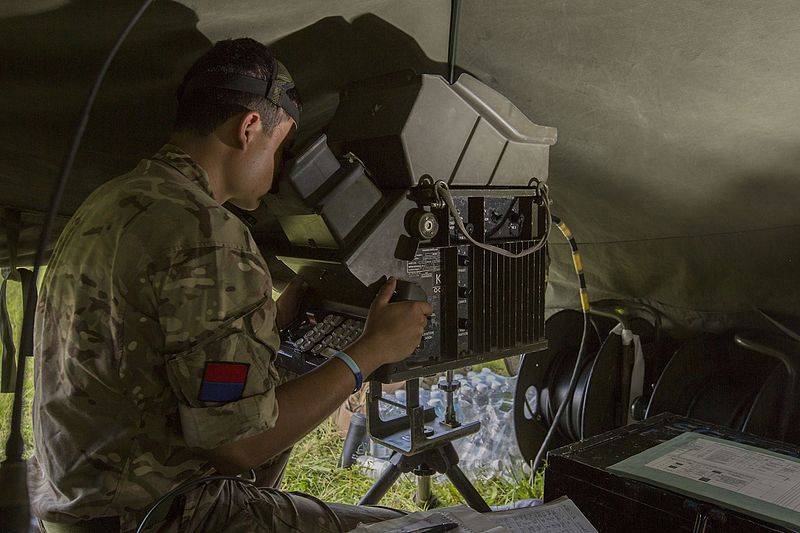
Simultaneously with the use of guidance radar and optoelectronic station, shelling of two different air targets is possible. The modernized "Rapier" is still in service with the British army, and is considered to be one of the best complexes in its class. The fact that several batteries were purchased by the US Air Force to cover its airfields in Western Europe was the recognition of the fairly high efficiency of the Rapier air defense missile system.
In the mid-80s, British air defense units tank and mechanized units received a variant of the Rapier air defense system on a tracked chassis. The complex, known as the Tracked Rapier ("Tracked Rapier"), used the M548 transporter as a base, the design of which, in turn, was based on the American M113 armored personnel carrier. All elements of the complex were installed on a self-propelled chassis capable of operating autonomously, except for the Blindfire escort radar. For this reason, the ability to combat air targets at night and in conditions of poor visibility has significantly deteriorated, but the time for transferring the air defense system to a combat position has significantly decreased, and the cost has decreased. In total, the British built two dozen self-propelled air defense systems and all of them were operated in the 22nd Air Defense Regiment.
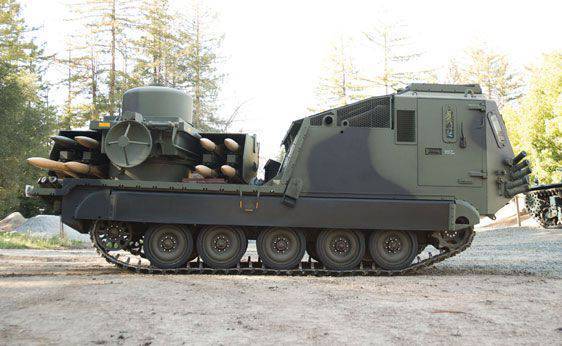
The design of the “Caterpillar Rapier” began in the middle of the 70-x on the order of Iran. However, by the time the complex was ready, there was an Islamic revolution in Iran and about the supply of British weapons this country was no longer addressed. By the time of the adoption of the radically modernized "Rapier-2000", the SAMs on the tracked chassis were considered obsolete and removed from service.
At the end of the 60-ies in the United States and the Soviet Union adopted the portable anti-aircraft missile systems FIM-43 Redeye and "Strela-2", which could carry and use one soldier. The American and Soviet MANPADS for targeting used homing heads that react to the heat of an airplane or helicopter engine, and after launching a rocket, the principle of “fired and forgotten” was implemented - that is, complete autonomy after launching over a pre-captured target that does not require participation in the targeting process arrow. Of course, the first MANPADS were very imperfect in terms of noise immunity, restrictions imposed when firing in the direction of natural and artificial heat sources. The sensitivity of the first generation thermal seeker was low and, as a rule, firing was carried out only after it, but the proper use of relatively inexpensive and compact systems could greatly complicate the actions of combat aircraft at low altitudes.
In contrast to the American and Soviet designers, who used the HOSC IC of the HKP in the creation of MANPADS, when developing weapons of a similar purpose, they once again went their own way. The specialists of the Shorts company used the radio command guidance method already implemented in the anti-aircraft complexes "Sea Cat" and "Taygerket" when creating MANPADS. At the same time, they proceeded from the fact that MANPADS with a radio command guidance system would be able to attack an air target on a head-on course and would be insensitive to heat traps, effective against missiles with an IR GOS. It was also believed that the management of missiles using radio commands will allow shelling targets operating at extremely low altitude and even if necessary to launch missiles at ground targets.
In 1972, the complex, known as the Blowpipe (Blowpipe), entered service with the British Army Air Defense units. The first British MANPADS could hit air targets at a range of 700-3500 meters and in the altitude range of 10-2500 meters. The maximum flight speed of the rocket exceeded 500 m / s.
The BloupZP MANPADS pushed 12,7-mm anti-aircraft machine guns and 20-mm anti-aircraft guns in the air defense missiles. In each company in two anti-aircraft platoons there were three divisions with four MANPADS. The personnel of the company moved on all-terrain vehicles, each unit was attached to a Land Rover with a radio station. At the same time, the British MANPADS turned out to be much harder than Red I and Strela-2. Thus, the Bloupipe in a combat position weighed 21 kg, the mass of the missile system was 11 kg. At the same time, the Soviet Strela-2 MANPADS weighed 14,5 kg with a mass of 9,15 kg missiles.
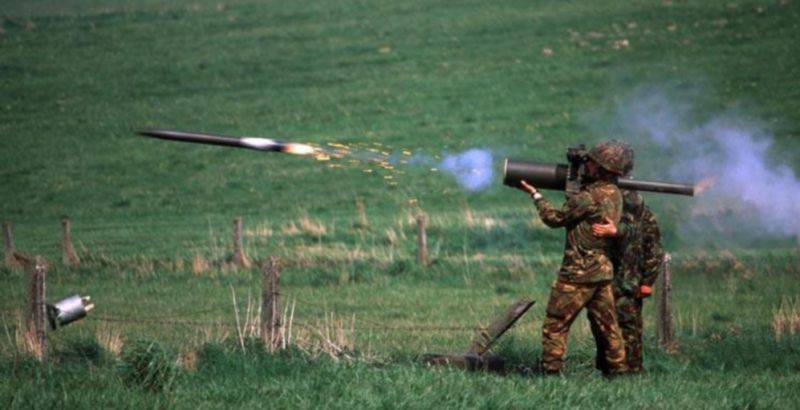
The greater weight of the British MANPADS was due to the fact that the composition of the complex, in addition to the radio command anti-aircraft missile placed in a sealed transport and launch container, included guidance tools. The removable unit with guidance equipment included a fivefold telescopic sight, a command transmission station, a counting device and an electric battery. After launching the missile defense system, the new TPC with an unused rocket is attached to the guidance unit.
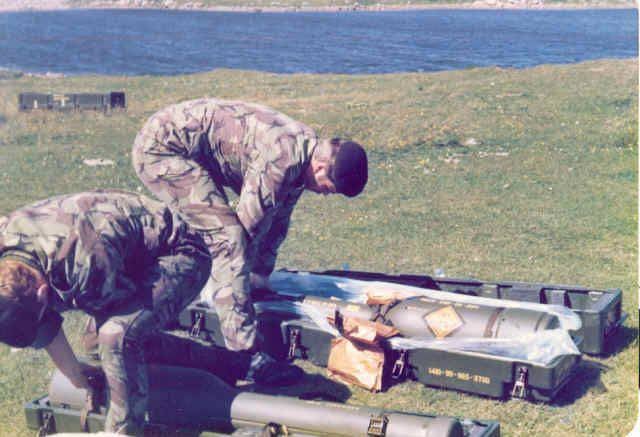
In addition to the contact fuse, the Bloupipe rocket also had a non-contact radio fuse, which undermined the warhead when the missile was flown in close proximity to the target. When firing at targets flying at extremely low altitude, or at ground and surface targets, the proximity fuze was turned off. The process of prelaunch preparation of the Bloupip MANPADS from the moment the target was detected until the launch of the missile took about 20 seconds. The control of the rocket on the trajectory was carried out using a special joystick. The effectiveness of the application of the British MANPADS directly depends on the psychophysical state and fitness and the anti-aircraft complex operator. In order to create sustainable skills for operators, a special simulator was developed. In addition to working out the process of capturing and pointing missiles at the target, the simulator reproduced the effect of starting with a change in the mass and center of gravity of the launch tube.
The baptism of the MANPADS "Bloupeyp" occurred on the Falklands, but the effectiveness of combat launches was low. Like the "Taygerkat", the British MANPADS had a rather "scaring off" effect, it was very difficult to hit the maneuvering speed target. In total, the British used more than 70 anti-aircraft Bloupe missiles during the South Atlantic military campaign. At the same time, it was stated that every tenth missile hit the target. But in reality, only one authentically destroyed Argentine attack aircraft is known. The fact that the British command initially was aware of the low combat characteristics of the Bloupe MANPADS is evidenced by the fact that in the first wave of British marines landed on the shore, there were the latest at that time American Stinger FIM-92A. On the first serial modification of the Stinger, the missile defense system was completed with a simplified IC GOS. However, the American MANPADS was much lighter and more compact, and there was also no need to direct a rocket at a target at the entire flight leg. During the battles on the Falkland Islands, the Stinger MANPADS for the first time in a combat situation shot down the Pukara turboprop attack aircraft and the Puma helicopter.
The low combat effectiveness of the Blouup MANPADS was next confirmed in Afghanistan when the British government transferred several dozen complexes to Afghan "freedom fighters". Against modern jet fighter-bombers and attack aircraft, the Bloupep proved completely ineffective. In practice, the maximum firing range - 3500 meters when launching at rapidly moving targets - due to the low speed of the rocket and decreasing in proportion to the accuracy range, it was impossible to implement. The actual firing range did not exceed 2 km. During the shows at the arms exhibitions, special emphasis was placed in advertising brochures on the possibility of attacking the target on a head-on course, but in practice this mode also proved to be ineffective. During the fighting in Afghanistan there was a case when the crew of the Mi-24 helicopter with a volley of NAR C-5 destroyed the MANPADS operator, which was aiming head-on, before the anti-aircraft missile hit the helicopter, after which the helicopter pilot abruptly turned off and avoided hitting. A total of two helicopters were destroyed by soldering pipes in Afghanistan. The Mujahideen, disillusioned with the combat capabilities of a heavy and bulky complex, tried to use it for firing on Soviet transport convoys and roadblocks. However, here Bloupep did not show itself either. The high-explosive fragmentation warhead that weighed 2,2 kg was often not enough to reliably defeat even the armored personnel carrier with anti-bullet armor, and the calculation of the MANPADS after launch, unmasking themselves with the smoke of the rocket, turned out to be under counterfire.
At the beginning of the 80-x, it became clear that Bloupe MANPADS did not meet modern requirements and could not provide effective protection against air strikes. The main claims of the military to the complex were: excessive mass, low speed of flight of missiles, low weight of the warhead for non-contact defeat and manual guidance to the target. In 1984, deliveries began to the troops of the complex, originally known as Blowpipe Mk.2, later, taking into account possible exports, the upgraded version of the Bloupeip was designated Javelin (“Javelin” is a throwing spear).
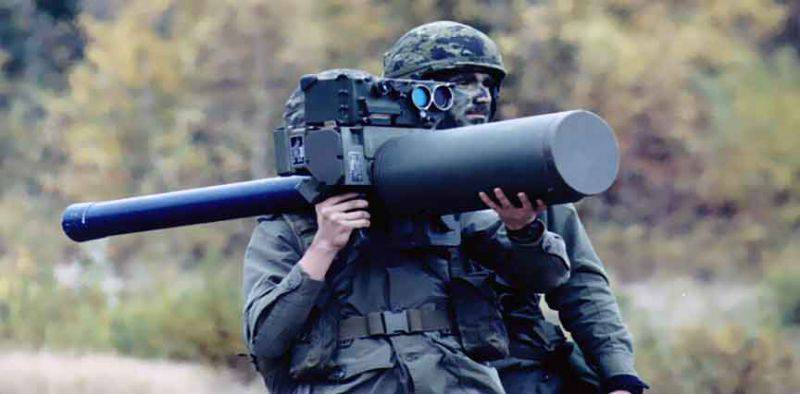
On this complex, the semi-automatic radio command principle of targeting is implemented and the speed of the Zour flight is increased, due to which the probability of hitting the target has sharply increased. The automatic control of the missile defense system after launching during the entire flight time is carried out using the SACLOS tracking system (Semi-Automatic Command to Line of Sight - semi-automatic command line-of-sight), which captures the radiation of tracers of the tail section of the rocket along the line of sight. On the camera screen displays marks from the rocket and the target, their location relative to each other is processed by the computing device, after which the guidance commands are broadcast aboard the rocket. The operator can only keep the target in sight, the automation itself does the rest.
Compared to Bloupipe on the Javeline, the range of aerial targets is increased by 1 km, and the height by 500 meters. Thanks to the use of a new solid fuel formulation in the engine, the speed of the rocket flight increased by about 100 m / s. In this case, the mass of warheads increased by 200 gr. If necessary, "Javelin" could be used for firing ground targets.
In the second half of the 80-x Javelin MANPADS passed "baptism of fire." According to British data, the Afghan Mujahideen, who received 27 complexes, launched an 21 rocket and hit 10 air targets. However, it is noted that not all airplanes and helicopters were shot down, some, after being damaged, managed to return to their airfield. It is difficult to say how much this information is true, but the fact that the updated British anti-aircraft complex with a semi-automatic guidance system has become much more effective is beyond doubt. The countermeasures used against MANPADS with TGS turned out to be completely ineffective in the case of radio-command missiles. Initially, the crews of the helicopters, for which the Javelins were the most dangerous, evaded the missiles with the help of an intensive maneuver. The most effective method of fighting was shelling the place from which the launch was made. Later, when Soviet intelligence was able to obtain information about the guidance equipment of British MANPADS, they began to mount jamming generators on planes and helicopters, clogging up the missile guidance channels, which made the Javelin inoperable.
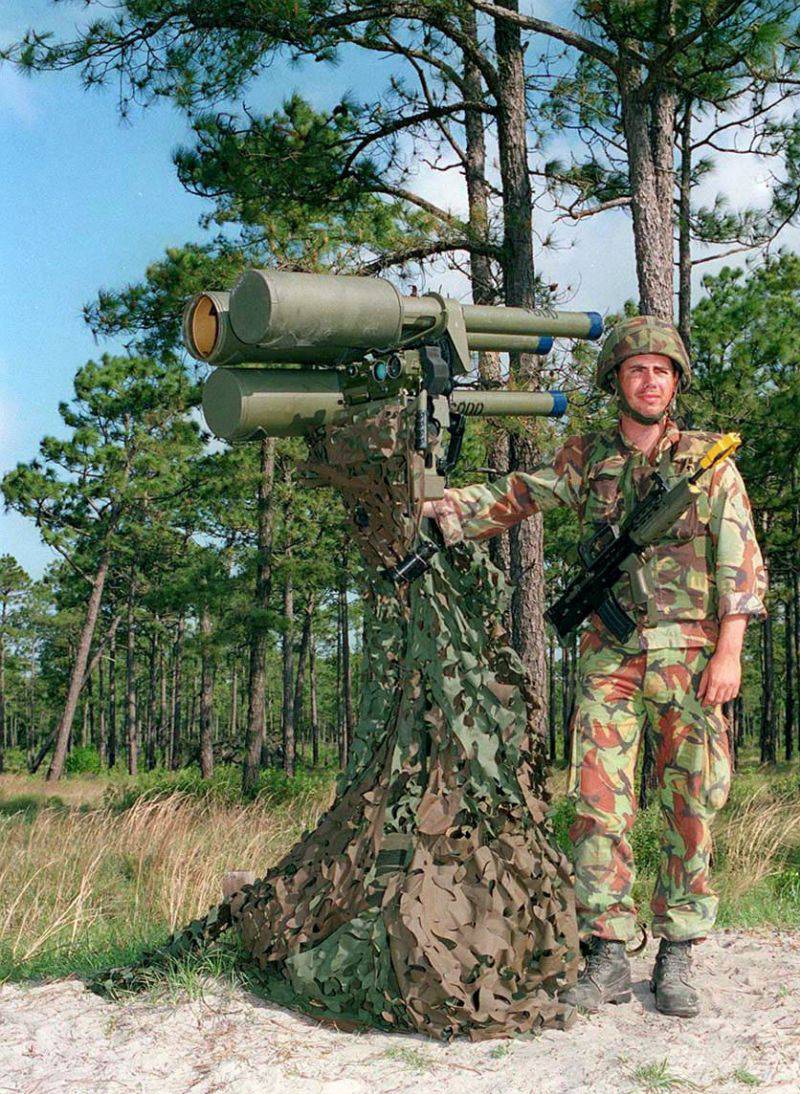
With a mass of “Javelina” in a combat position of about 25 kg, this complex is very difficult to call portable. Being with him in a combat position for a long time is physically impossible. In this regard, a launcher has been created - LML (Lightweight Multiple Launcher), which can be mounted on different chassis or used from the ground.
After the EW equipment appeared in the USSR, effectively suppressing the radio command command system of MANPADS, the response of the British developers was to create a modification with the Javelin S15 laser guidance equipment. Thanks to a more powerful engine and improved aerodynamics of the rocket, the firing range of the updated anti-aircraft complex increased to 6000 m. Later, as in the case of Javelin, the new modification got its own name - Starburst (“Starburs” - star flash).
Due to the increased mass and dimensions, the Javelin and Starbers complexes ceased to be “portable” in the direct sense of the word, but became essentially “portable”. It was quite logical to create multiply charged launchers with night-time thermal imaging equipment for mounting on a tripod and various chassis. More stable multi-shot launchers, unlike single MANPADS, provide greater fire performance and better conditions for targeting an anti-aircraft missile at a target, which ultimately significantly increases the likelihood of destruction. After the introduction of multi-charge PU thermal imagers, the anti-aircraft complexes became daily.
The anti-aircraft complexes Javelin and Starburst were in many ways similar to each other, retaining the features of the “progenitor” - Blowpipe MANPADS. This ensured continuity in many details, techniques and methods of application, which reduced the cost of production and facilitated the development of the troops. However, in 80-e it became clear that to use the technical solutions laid down by 20 years ago to infinity is no longer possible. Once again, the designers of Shorts Missile Systems, who had previously designed all British MANPADS, surprised the world by creating the Starstreak complex (Starstreak - the star trail). In 1997, at the time of the adoption of the complex, Shorts Missile Systems was absorbed by the multinational corporation Thales Air Defense.
When creating the Starstream SAM, a number of technical solutions were applied, which have no analogues in world practice. Thus, in one anti-aircraft missile, three individually targeting arrow-shaped submunitions with a mass of 900 g, a length of 400 mm and a diameter of 22 mm are used at once. Each arrow, whose head part consists of a heavy tungsten alloy, contains a charge of explosives, which is destructively comparable to an 40-mm anti-aircraft projectile. In terms of the range and height of the air targets, Starstroke is at the Starburs level.
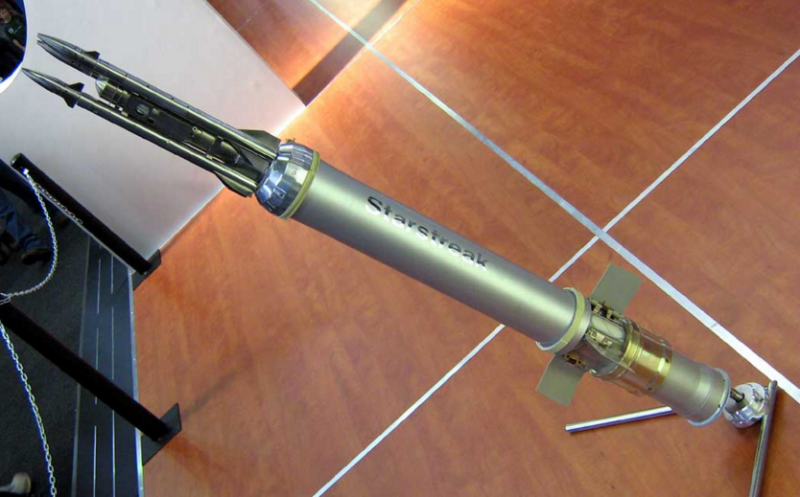
After the launch and separation from the upper stage at a speed of about 1100, the “arrows” continue to fly by inertia, lining up a triangle of laser beams formed in the vertical and horizontal planes. This principle of targeting is known as the “laser path” or “settled beam”.
Thales Air Defense advertising brochures state that swept submunitions throughout the flight segment can hit air targets that maneuver with an overload to 9g. It is stated that the use of three arrow-shaped combat elements gives the probability of hitting the target with at least 0,9 with at least one submunition. The complex implemented the ability to fire at ground targets, while swept combat elements capable of penetrating the frontal armor of the Soviet BMP-2.
The main variant of the Starstreak anti-aircraft complex was the lightly multiply charged LML launcher on a rotating device, consisting of three vertically arranged TLCs with an aiming unit and a thermal imaging system for detecting airborne targets. In total, the weight of the installation, consisting of a tripod, a tracking thermal imaging system and an aiming unit without taking into account three anti-aircraft missiles, is more than 50 kg. That is, to transfer the launcher over long distances can only be disassembled and separate from the missiles. This requires 5-6 military personnel. The assembly and transfer of the complex to the combat position takes 15 minutes. It is clear that this complex can be considered "portable" with a great stretch. With this weight and size, the LML launcher is more suitable for mounting on different chassis.
A common feature of all British "light" air defense missiles, intended for use by infantry units, is that the operator, after the launch of the rocket, has to keep the target in sight, targeting the missile before meeting it with a target that imposes certain limitations and increases the calculation's vulnerability. The presence of equipment on the zenith complex, with the help of which the transmission of missile guidance commands is carried out, complicates the operation and increases the cost. Compared with MANPADS with TGS, the British complexes are more suitable for hitting targets flying at extremely low altitude, and they are insensitive to thermal interference. At the same time, the weight and dimensions of British MANPADS make their use by units operating on foot very problematic.
For the British army using the Starstreak SAM, Thales Optronics has created a short-range mobile air defense system Starstreak SP. The chassis for this machine served as a tracked armored car Stormer. Starstreak SP deliveries began soon after the adoption of the portable complex. In the army, he replaced the outdated mobile SAM system Tracked Rapier.
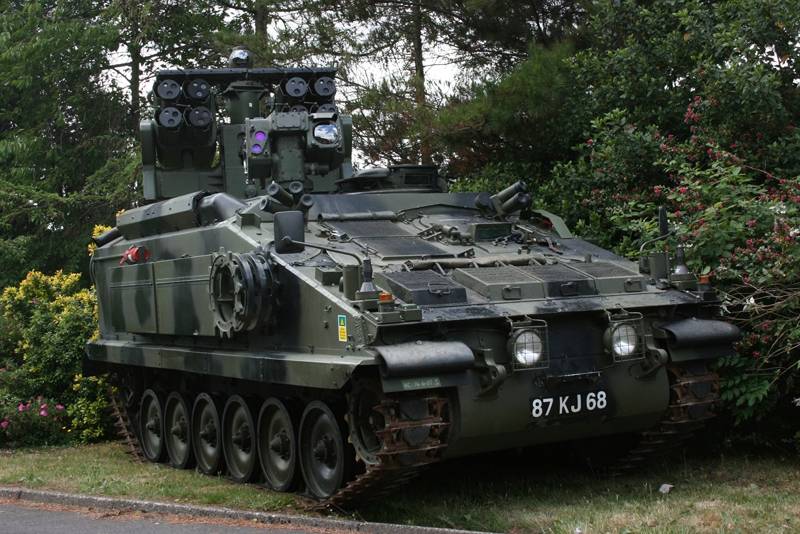
For independent search and maintenance of air targets, an ADAD optoelectronic system (Air Defense Alerting Device) is used. In simple weather conditions, the ADAD equipment is capable of detecting a fighter target at a distance of 15 km, and a “combat helicopter” - 8 km. The response time of the air defense missile system from the moment the target is detected is less than 5.
The crew of the Starstreak SP self-propelled air defense missile system consists of three people: a commander, a homing operator, and a driver. In addition to the eight missiles, ready for use, there are twelve missiles in combat stacking. Compared with Starstrik, the mobile anti-aircraft complex, capable of operating in combat only with tanks and infantry fighting vehicles, has greater fire performance and combat stability, due to the presence of ADAD equipment, airborne targets are searched and maintained in a passive mode, without unmasking radar radiation. However, a common disadvantage of laser-guided missiles is their large dependence on the state of transparency of the atmosphere. Meteorological factors - fog and precipitation or an artificially set smoke screen - can significantly reduce the launch range or even disrupt the guidance of anti-aircraft missiles.
At present, only short-range complexes are in service with British air defense units. The latest long-range air defense systems Bloodhound Mk. II decommissioned in the 1991 year. The end of the Cold War and budgetary constraints have led to the rejection of the planned adoption of the American MIM-104 Patriot air defense system. At the moment, the air defense of the British Isles and the expeditionary forces operating outside the UK rely on interceptors. On the continental part of the United States, there are also no ZRK positions that are constantly on duty, but most of the US bases abroad are covered by the Patriot anti-aircraft systems capable of intercepting operational-tactical ballistic missiles. Given the proliferation of rocket technologies and the aggravation of the international situation, the British leadership is considering the possibility of adopting long-range air defense systems.
The PAAMS air defense system with the Aster-15 / 30 air defense system is part of the armament of the British destroyers Type 45. In the Aster-15 / 30 anti-aircraft missiles with vertical launch, differing accelerating stage, launch range and cost, targeting to the target is carried out by an active radar seeker.
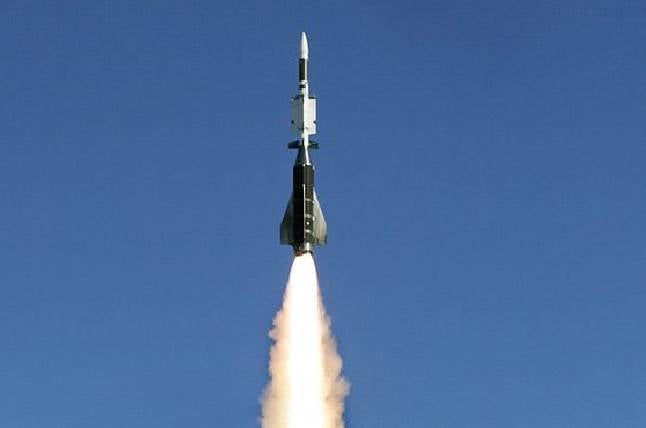
Aster-30 missiles are also used in SAMP-T SAMs (Surface-to-Air Missile Platform Terrain - medium-range ground-based air defense and anti-missile systems). The SAMP-T ZRS is a product of the international consortium Eurosam, which in addition to French and Italian companies includes the British BAE Systems.
All elements of the SAMP-T are placed on all-wheel drive trucks of all-terrain vehicles. The anti-aircraft system includes: a combat command post, a Thompson-CSF Arabel multi-purpose radar with PAR, four vertical-start SPUs with eight missiles ready for use in TPC and two transport-loading machines.
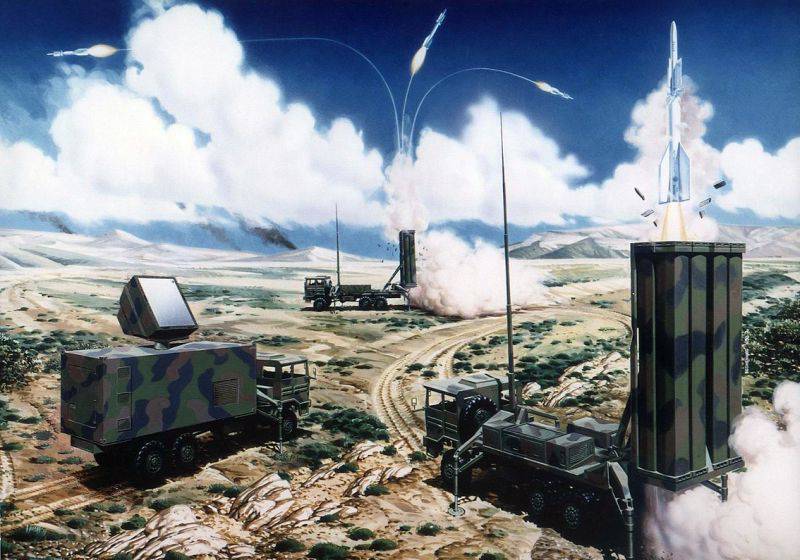
SAMP-T ZRS is capable of firing aerial and ballistic targets in the 360 degrees sector. The highly automated anti-aircraft system with maneuverable long-range missiles, flying at speeds up to 1400 m / s, has a large fire performance and good mobility on the ground. It can fight air targets at 3-100 km distances and at altitudes up to 25 km, intercept ballistic missiles at a distance of 3-35 km. The system is capable of tracking up to 100 targets simultaneously and firing 10 targets.
At the initial part of the flight of an anti-aircraft missile, its trajectory is constructed according to the data previously loaded into the memory of the autopilot processor. On the middle part of the trajectory, the radio command guidance method is used according to data from the universal radar detection and guidance. At the final leg of the flight, an active homing unit takes over. The Aster-30 missile carries a fragmentation warhead with a programmable delayed triggering of a proximity fuze. In the future, the modification of the Aster Block 2 BMD will increase the speed of the missile defense system by two times, which will expand the possibilities for intercepting ballistic missiles.
Currently, several SAMP-T ZRS batteries have been built. Their trial operation is carried out by the French Air Force. In general, this is a fairly effective anti-aircraft system with a large modernization potential, and in the event that the British Defense Ministry finds the means, then SAMP-T can strengthen the British air defense system.
To be continued ...
Based on:
http://www.adsadvance.co.uk/ground-based-air-defence-systems-in-place-for-major-olympics-security-exercise.html
http://www.armedforces.co.uk/army/listings/l0115.html
http://www.mbda-systems.com/product/aster-30-sampt/
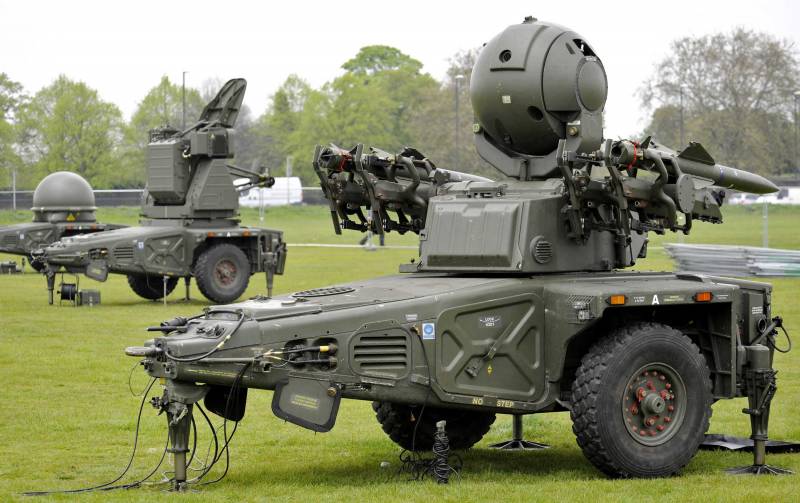
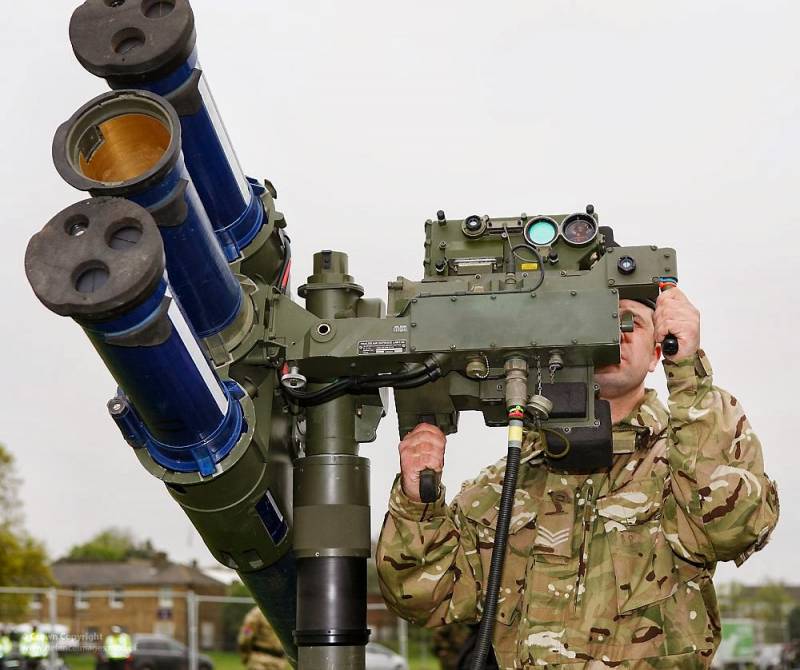
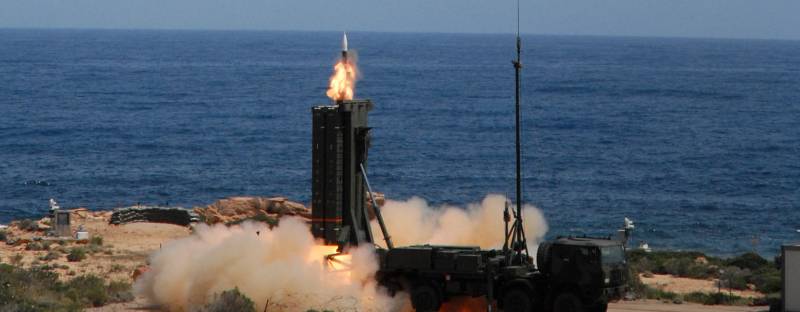
Information